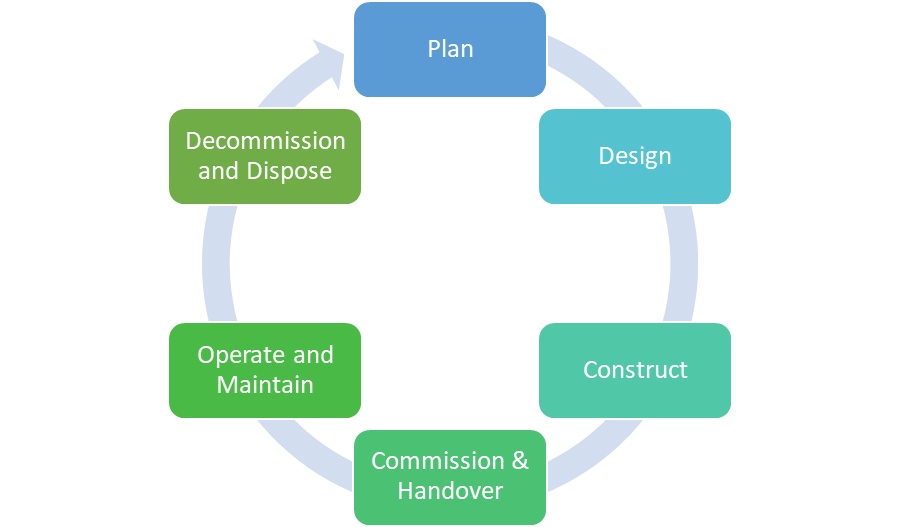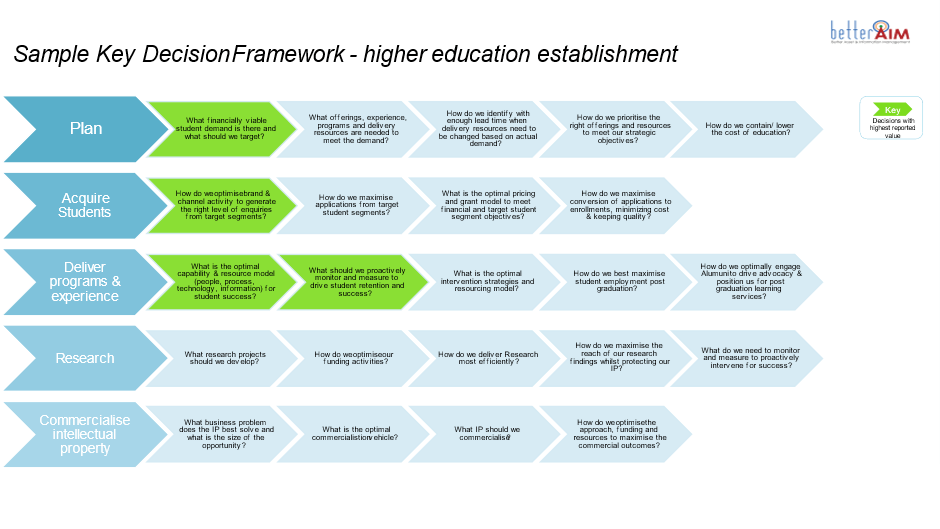In this great age of digital, all decisions are made using data…. right?
At all levels within organisations, many business decision-makers that we speak to confirm that a significant gap still exists in them having the right data of the right quality at the right time to make optimal decisions. Yes, everyone typically uses some data, but most can point to significant opportunities for improvement. This is despite many of these organisations investing significant monies over several years on IT and information related initiatives. They frequently see a significant disconnect between big information technology implementations and the decision-making information they continue to have on the ground. So why is it proving so challenging?
As they say, the devil is in the detail. One of our key observations is the gap between the strategic high level IT and information strategies and the specific decisions and information that users need improving. All too often, the initiatives never get down to the needs of particular decisions or the improvement of the underlying information. Same poor data, just on a new platform……

At BetterAIM, we believe in making data-driven decision making real. It is a supportive approach that identifies an organisation’s key decisions. By key decisions, we mean the ones with the highest impact on that organisation’s objectives. From an Asset Management perspective, we use the asset lifecycle below to identify internal stakeholders. We call this the Key Decision Framework, and it provides an easily understood statement of intent and direction for key stakeholders.
As outlined in the example below, the same approach can be used in non-asset management contexts using customer, student, and case management, among others.

Our stakeholders typically identify ~20 Key Decisions across the lifecycle. We focus on Decisions, as opposed to Insights or Questions, because Decisions are the point at which more value can be created if decision effectiveness is optimised, e.g. Do I plan for a 20% or 30% in demand over the next five years? Etc.
Having performed this for multiple organisations within the same industry, one sees many similarities in the Key Decisions.
It is not a cut and paste job as decisions, and the emphasis between decisions vary significantly based on individual organisations’ factors. For example, their relative information maturity, their strengths – some have invested considerably in demand forecasting or other decisions, the relative size of their upcoming capital delivery programs compared to the expenditure they face on existing assets. The focus is directed to where there is significant value/risk.
We recommend focusing on ~20 decisions instead of capturing the hundreds of decisions organisations make daily. There is typically quite a bit of effort required to fully address and implement an uplift in capability for a specific decision. Improvement plans often consider the software system instead of the supporting people, process, and data issues.
The ~20 Key Decisions should have the highest uplift in value or payback to the organisation if they were improved. Simply put, they are decisions with a high value at stake that are not made that effectively at present.
Some decisions, such as “Where are my critical assets?” or “What is the probability of assets failing?” etc. are used throughout the asset lifecycle. We cater to this by having a category of Foundational Key Decisions, i.e., used in all or multiple phases of asset lifecycle decision-making.
We will write more about what to do with your Key Decisions in our next post, but simply put, having identified them, one validates the value at stake and unpacks the information elements i.e. specific pieces of information that make up the decision. In this way, the quality and issues relating to the underlying information can be understood.
Where appropriate, i.e. where quality is not fit for purpose, the issues and root causes need to be unpacked so that the right remediation strategy and a value-focused improvement program can be developed. By following this approach, you will have a complete line of sight from information improvement initiatives to the Key Decisions and the value at stake (business case).
We should add here, the goal is not 100% data quality. It is just achieving a fit for purpose level of data quality that will uplift organisational value through the targeted decisions.
We hope this is of help in getting you started. We are keen to hear your thoughts and any questions you may have. Our next post will discuss how this maps into an effective asset information strategy.

